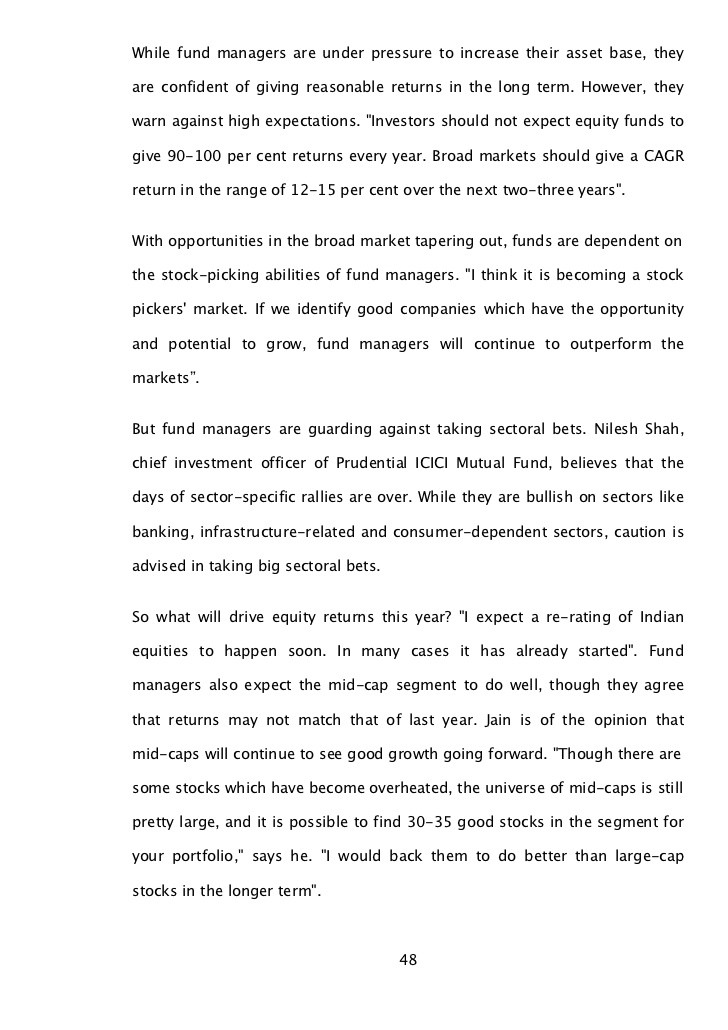Mutual Funds Report Pressure Builds To Cut Fund Fees
Post on: 15 Май, 2015 No Comment

By CARLA FRIED
Published: January 11, 2004
MANY otherwise cost-conscious Americans have been price-insensitive about their mutual fund investments. Driving five miles to save a dollar on a quart of olive oil makes perfect sense to many people who have never questioned paying higher mutual fund fees than big institutional investors do, even though these expenses can add up to thousands of dollars in a long-term investment.
Eliot Spitzer, the New York attorney general, is out to change that. Fees took center stage in the settlement he reached in December with Alliance Capital Management in connection with accusations of trading abuses in the company’s mutual funds. Alliance agreed to reduce its management fees by 20 percent for the next five years, generating an estimated $350 million in savings for Alliance fund shareholders. The firm will also disclose publicly how it sets fees. Mr. Spitzer has said that settlements with other mutual fund companies will focus on fees, which he has said are »grossly out of control.»
The Investment Company Institute, the mutual fund trade association, issued a report on Tuesday that challenges the assumptions made by Mr. Spitzer and others. Mr. Spitzer, in turn, said in a statement that the institute’s report was »fundamentally flawed.»
What no one questions is that the pressure on mutual funds to reduce fees is beginning to come from multiple constituencies.
John P. Freeman, a professor at the University of South Carolina law school, said the Alliance settlement could be an opportunity for others to challenge fees in the industry. »The settlement is a signal to everyone else that there’s gold in them thar hills,» said Mr. Freeman, who, with Stewart Brown, wrote a 2001 study that found that retail fund investors pay higher advisory fees than pension plans and other institutional clients. »High-cost funds can book it that plaintiffs’ lawyers are going to get in line.»
The heightened possibility of lawsuits over fees is bound to get the attention of fund directors, some legal authorities said. »It’s not as if boards don’t take the fee issue seriously now, but this heightens awareness and probably causes boards to sharpen their pencils a bit more,» said Ted Laurenson, a partner at Baker & McKenzie, who specializes in securities law.
Max Rottersman, an independent fund consultant and editor of FundExpenses.com, which includes monthly commentary on fund fee issues, also said he expected pension and 401(k) sponsors to pay more attention to fees.
»Employees are asking, ‘What are you doing to protect me?»’ Mr. Rottersman said. »Everyone is waking up about who their client is and understanding they need to take a more active role in that responsibility. You can’t buy performance, but you can pay attention to fees.»
Mr. Spitzer’s moves are also regarded as a marketing opportunity for funds. »He’s signaling to low-cost funds that they should push their competitive advantage on fees,» said Lucas Garland, a research analyst at Lipper, the fund-tracking firm. Additional pressure may be coming from the NASD, formerly the National Association of Securities Dealers, which oversees fund advertising. An NASD proposal would require important fund expenses to be displayed prominently in all advertisements.
In the last few months, mutual fund fees have become something of a preoccupation in Washington. In November, the House of Representatives passed a bill that would, among other fund changes, require the Securities and Exchange Commission to expand fee disclosure to investors; the bill is now before the Senate.
Senator Peter G. Fitzgerald, an Illinois Republican who is a member of the subcommittee investigating fund fees, has called the industry’s fee structure »the world’s largest skimming operation — a $7 trillion trough from which fund managers, brokers and other insiders are steadily siphoning off an excessive slice of the nation’s household, college and retirement savings.»
The S.E.C. has indicated that it will not wait for Congress to act. The commission chairman, William H. Donaldson, said he expected the S.E.C. to formally propose this month that fund fees be disclosed periodically in statements to investors as an actual dollar estimate based on an investor’s assets in a specific fund. The House bill includes this provision. Currently, fee disclosure is presented in fund prospectuses and marketing material as a generic percentage of fund assets for all investors. Proponents of the personalized example say it will increase consumer awareness of the cost of various fund fees, and make fund comparisons easier.
IN addition, the S.E.C. has proposed a rule aimed at clarifying when investors are eligible to pay a reduced front-end load. Funds typically reduce the load for large investments of $50,000 or more in a single fund or across a fund company. But a recent S.E.C. study found that these »breakpoints» are not always disclosed to an investor. The study found that investors eligible for breakpoints were entitled, on average, to $364 in discounts they did not receive.














